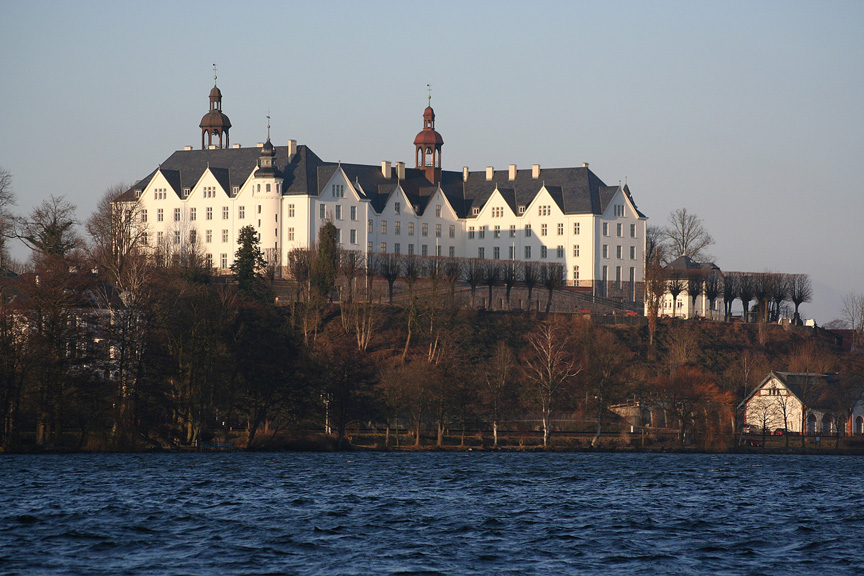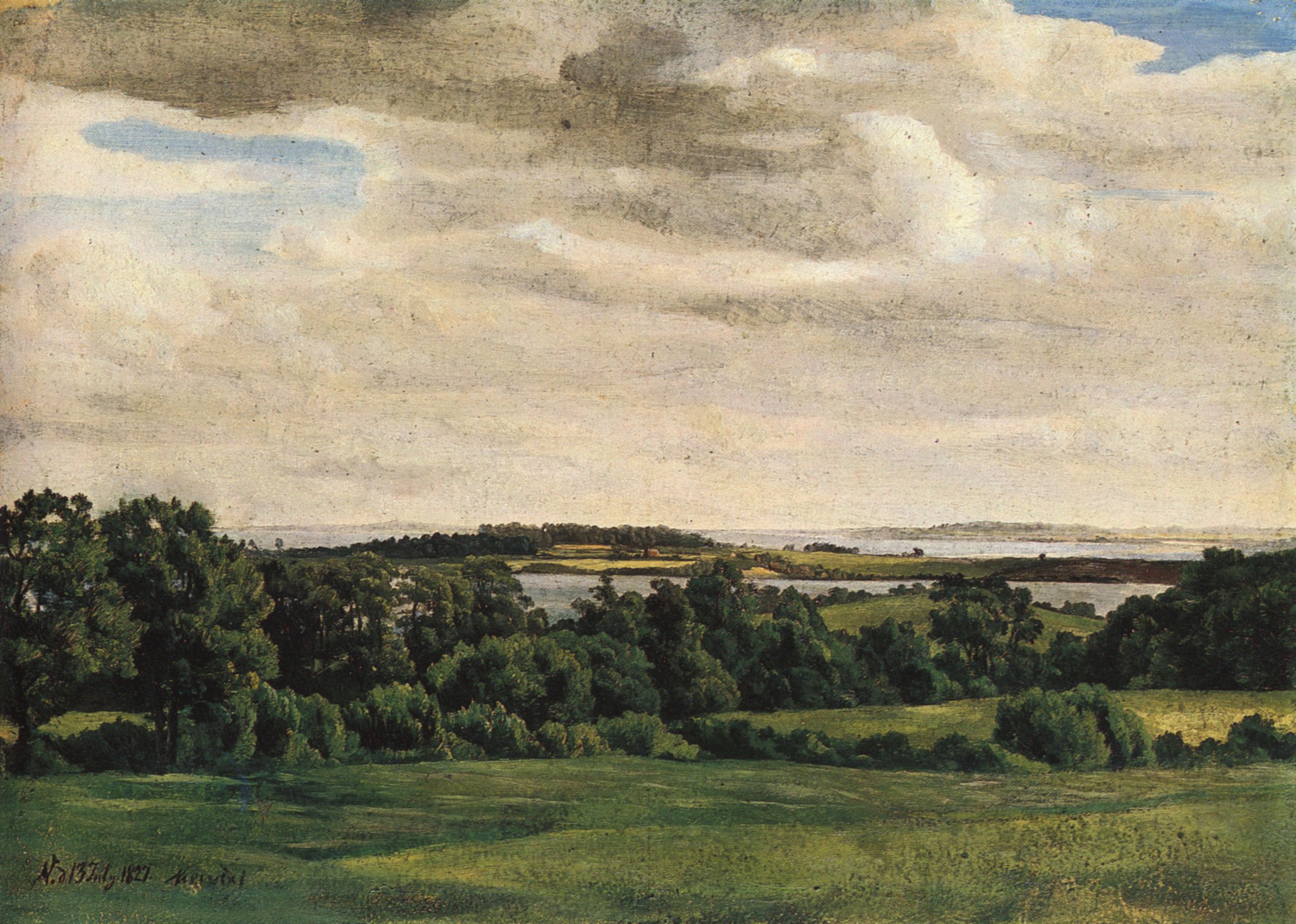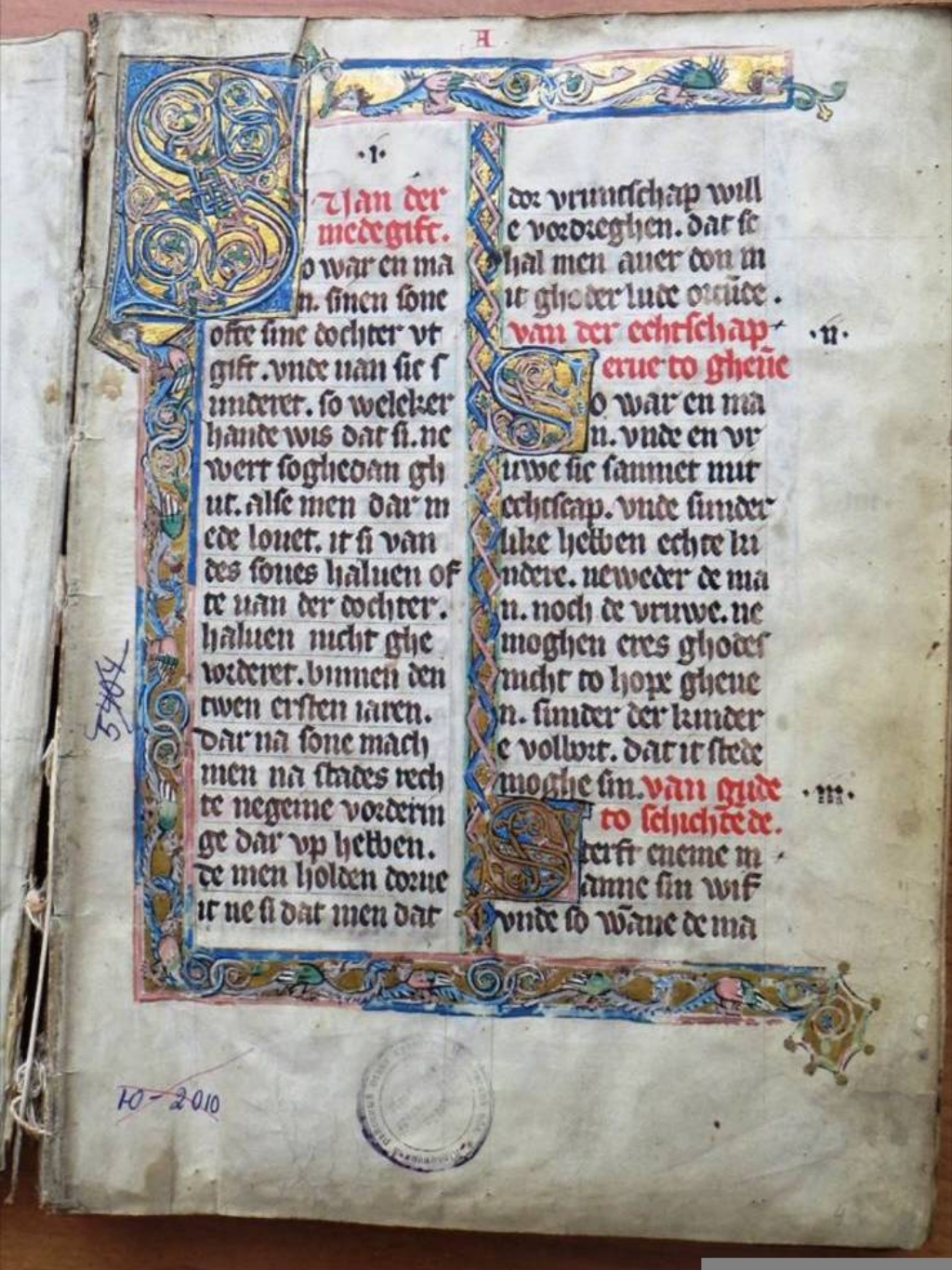|
Plön
Plön (; ) is the district seat of the Plön district in Schleswig-Holstein, Germany, and has about 8,700 inhabitants. It lies right on the shores of Schleswig-Holstein's biggest lake, the Great Plön Lake, as well as on several smaller lakes, touching the town on virtually all sides. The town's landmark is Plön Castle, a chateau built in the 17th century on a hill overlooking the town. Plön has a grammar school with a 300-year history, and is home to a German Navy non-commissioned officer school and the Max Planck Institute for Evolutionary Biology. The town, nestled as it is in the hilly, wooded lake district of Holstein Switzerland (''Holsteinische Schweiz''), also has importance in the tourism industry. History In the course of the Migration Period, Slavic tribes entered the region of Plön during the early 7th century following the withdrawal of the original Germanic population. On the large island opposite Plön, which was later called ''Olsborg'', they built a l ... [...More Info...] [...Related Items...] OR: [Wikipedia] [Google] [Baidu] |
Plön 01
Plön (; ) is the district seat of the Plön district in Schleswig-Holstein, Germany, and has about 8,700 inhabitants. It lies right on the shores of Schleswig-Holstein's biggest lake, the Great Plön Lake, as well as on several smaller lakes, touching the town on virtually all sides. The town's landmark is Plön Castle, a chateau built in the 17th century on a hill overlooking the town. Plön has a Gymnasium (school), grammar school with a 300-year history, and is home to a German Navy non-commissioned officer school and the Max Planck Institute for Evolutionary Biology. The town, nestled as it is in the hilly, wooded lake district of Holstein Switzerland (''Holsteinische Schweiz''), also has importance in the tourism industry. History In the course of the Migration Period, Slav peoples, Slavic tribes entered the region of Plön during the early 7th century following the withdrawal of the original Germanic peoples, Germanic population. On the large island opposite Plön, which ... [...More Info...] [...Related Items...] OR: [Wikipedia] [Google] [Baidu] |
Plön Castle
Plön Castle () in Plön is one of the largest castles in the north German state of Schleswig-Holstein and the only one located on a hill.''Schloss Plön'' at www.fielmann-akademie.com. Accessed on 31 Aug 2010. The former '''' of the Dukes of Schleswig-Holstein-Plön was built in the 17th century during the and has had a colourful history in which it has, for example, been a school for military cadets and also a boarding school. The castle ende ... [...More Info...] [...Related Items...] OR: [Wikipedia] [Google] [Baidu] |
Holstein Switzerland
Holstein Switzerland () is a hilly area with a patchwork of lakes and forest in Schleswig Holstein, Germany, reminiscent of Swiss landscape. Its highest point is the Bungsberg (168 metres above sea level).Carl Ingwer Johannsen & Eckardt Opitz: ''Das grosse Schleswig-Holstein-Buch.'' Hamburg 1996 It is a designated nature park as well as an important tourist destination in Northern Germany situated between the cities of Kiel and Lübeck. Geography Holstein Switzerland lies in eastern Schleswig-Holstein. This picturesque region in the historical county of Wagria has no precise political or geographic boundaries. Most of the area falls within the districts of Ostholstein and Plön, roughly between the cities of Lübeck and Kiel and extends as far north as the Baltic coast. Its major towns include Bad Malente-Gremsmühlen, Lütjenburg, Oldenburg in Holstein, Preetz and the old '' Residenz'' seats of Eutin and Plön. The charm of this region is its ever-changing landsca ... [...More Info...] [...Related Items...] OR: [Wikipedia] [Google] [Baidu] |
Max Planck Institute For Evolutionary Biology
The Max Planck Institute for Evolutionary Biology is a German institute for evolutionary biology. It is located in Plön, Schleswig-Holstein, Germany. History The institute was founded by German zoologist Otto Zacharias as ''Hydrobiologische Station zu Plön''. Working in Italy in the 1880s, Zacharias was inspired by the highly recognised Stazione Zoologica in Naples, founded in 1870 by Anton Dohrn, to set up the first biological station for freshwater research in Germany. He secured financial support from the Prussian government and several private individuals to establish it on Großer Plöner See in 1891, as a private research institute. As the director, Zacharias published research reports from 1893 on the Station's activities, which were recorded from 1905 in the Archives of Hydrobiology. In so-called "summer schools" Zacharias trained teachers and laity interested in working with the microscope. It became part of the Max Planck Society in 1948, and was renamed in 1966 as ... [...More Info...] [...Related Items...] OR: [Wikipedia] [Google] [Baidu] |
River Schwentine
The Schwentine is a river in the North German state of Schleswig-Holstein. It is approximately long and rises on the hill of Bungsberg, the highest point in the state, near the village of Kasseedorf in Ostholstein. It then runs from its source to Kiel where it flows into the Kiel Fjord, a bay of the Baltic Sea. It passes through several lakes, including the Großer Plöner See, the largest lake in Schleswig-Holstein, as well as the towns Eutin, Malente, Plön, Preetz and Kiel. Water management The Schwentine is of great importance in the supply of drinking water managed by the Kiel Utilities Company. The Schwentine Valley Waterworks (''Wasserwerk Schwentinetal'') has been located near Klausdorf since about 1900. Although the Schwentine valley gives an exceptionally natural impression along virtually its entire length, it is closely linked to the industrialisation of the city of Kiel. Two hydroelectric plants, now classed as cultural monuments, (one on the Rosensee) were la ... [...More Info...] [...Related Items...] OR: [Wikipedia] [Google] [Baidu] |
County Of Holstein
Holstein (; ; ; ; ) is the region between the rivers Elbe and Eider. It is the southern half of Schleswig-Holstein, the northernmost state of Germany. Holstein once existed as the German County of Holstein (; 811–1474), the later Duchy of Holstein (; 1474–1866), and was the northernmost territory of the Holy Roman Empire. The history of Holstein is closely intertwined with the history of the Danish Duchy of Schleswig (). The capital of Holstein is Kiel. Holstein's name comes from the Holcetae, a Saxon tribe mentioned by Adam of Bremen as living on the north bank of the Elbe, to the west of Hamburg. The name means "dwellers in the wood" or "hill-sitters" (Northern Low Saxon: ; ). History Origins After the Migration Period of the Early Middle Ages, Holstein was adjacent to the Obotrites on the coast of the Baltic Sea and the land of the Danes in Jutland. With the conquest of Old Saxony by Charlemagne ''circa'' 800, he granted the land north of the Eider River (Schles ... [...More Info...] [...Related Items...] OR: [Wikipedia] [Google] [Baidu] |
Holstein
Holstein (; ; ; ; ) is the region between the rivers Elbe and Eider (river), Eider. It is the southern half of Schleswig-Holstein, the northernmost States of Germany, state of Germany. Holstein once existed as the German County of Holstein (; 811–1474), the later Duchy of Holstein (; 1474–1866), and was the northernmost territory of the Holy Roman Empire. The history of Holstein is closely intertwined with the history of the Kingdom of Denmark, Danish Duchy of Schleswig (). The capital of Holstein is Kiel. Holstein's name comes from the Holcetae, a Saxons, Saxon tribe mentioned by Adam of Bremen as living on the north bank of the Elbe, to the west of Hamburg. The name means "dwellers in the wood" or "hill-sitters" (Northern Low Saxon: ; ). History Origins After the Migration Period of the Early Middle Ages, Holstein was adjacent to Obotrites, the Obotrites on the coast of the Baltic Sea and the land of the Danes in Jutland. With the conquest of Old Saxony by Charlemagne ... [...More Info...] [...Related Items...] OR: [Wikipedia] [Google] [Baidu] |
Schleswig-Holstein
Schleswig-Holstein (; ; ; ; ; occasionally in English ''Sleswick-Holsatia'') is the Northern Germany, northernmost of the 16 states of Germany, comprising most of the historical Duchy of Holstein and the southern part of the former Duchy of Schleswig. Its capital city is Kiel; other notable cities are Lübeck and Flensburg. It covers an area of , making it the 5th smallest German federal state by area (including the city-states). Historically, the name can also refer to a larger region, containing both present-day Schleswig-Holstein and the former South Jutland County (Northern Schleswig; now part of the Region of Southern Denmark) in Denmark. Schleswig, named South Jutland at the time, was under Danish control during the Viking Age, but in the 12th century it became a duchy within Denmark due to infighting in the Danish Royal House. It bordered Holstein, which was a part of the Holy Roman Empire. Beginning in 1460, the King of Denmark ruled both Schleswig and Holstein as the ... [...More Info...] [...Related Items...] OR: [Wikipedia] [Google] [Baidu] |
Helmold Of Bosau
Helmold of Bosau (c. 1120 – after 1177) was a Saxon historian of the 12th century and a priest at Bosau near Plön. He was a friend of the two bishops of Oldenburg in Holstein, Vicelinus (died 1154) and Gerold (died 1163), who did much to Christianize the Polabian Slavs. History Helmold was born near Goslar. He grew up in Holstein, and received his instruction in Brunswick from Gerold, the future bishop of Oldenburg (1139–42). Later he came under the direction of Vicelinus, the Apostle of the Wends, first in the Augustinian monastery of Faldera, afterwards known as Neumünster (1147–53). He became a deacon about 1150, and finally became a parish priest in 1156 at Bosau on Großer Plöner See. At Bishop Gerold's instigation Helmold wrote his '' Chronica Slavorum'', a history of the conquest and conversion of the Polabian Slavs from the time of Charlemagne (about 800) to 1171. The purpose of this chronicle was to demonstrate how Christianity and the German national ... [...More Info...] [...Related Items...] OR: [Wikipedia] [Google] [Baidu] |
German Navy
The German Navy (, ) is part of the unified (Federal Defense), the German Armed Forces. The German Navy was originally known as the ''Bundesmarine'' (Federal Navy) from 1956 to 1995, when ''Deutsche Marine'' (German Navy) became the official name with respect to the 1990 incorporation of the East German ''Volksmarine'' (People's Navy). It is deeply integrated into the NATO alliance. Its primary mission is protection of Germany's territorial waters and maritime infrastructure as well as sea lines of communication. Apart from this, the German Navy participates in peacekeeping operations, and renders humanitarian assistance and disaster relief. It also participates in anti-piracy operations. History German Naval history has its roots in the naval history of the Holy Roman Empire, to which the Naval history of the Netherlands, Dutch Navy and even the Spanish Navy once belonged. Proper German language early maritime history is represented by the Hanseatic League and the Brandenbu ... [...More Info...] [...Related Items...] OR: [Wikipedia] [Google] [Baidu] |
Lübeck Law
The Lübeck law () was the family of codified municipal law developed at Lübeck, which became a free imperial city in 1226 and is located in present-day Schleswig-Holstein. It was the second most prevalent form of municipal law in medieval and early modern Germany next to the Magdeburg Law. Lübeck Law provided for municipal self-government and self-administration yet did not negate dependence upon a lord, be it a bishop, duke, king or, in Lübeck's case, an emperor. Instead, it allowed the cities a certain degree of autonomy and self-reliance in legislative, judicial and executive matters. While these authorities were vested in the city council (Rat), the members of which could be elected by co-option, the Lübeck Law represents a significant modernization of governance in that a class of burghers, as opposed to nobles, were responsible for the day-to-day affairs of governing. The Lübeck Law is not analogous to Hanseatic law. Hanseatic cities adopted either Lübeck or Magde ... [...More Info...] [...Related Items...] OR: [Wikipedia] [Google] [Baidu] |
Kruto
Kruto the Wend (or Cruto) (died 1093), son of Grin or Grinus, was a prince of Wagria.Joachim Herrmann, ''Die Slawen in Deutschland'' (Berlin: Akademie-Verlag, 1985), 366. James Westfall Thompson believed his family belonged to the Rani of Rugia. Gottschalk, a Christian Obodrite prince who was married to the daughter of his Danish ally Sven Estridson, had subdued the Obodrite and some Lutician tribes in the 1050s.Joachim Herrmann, 365. In 1066, Kruto succeeded in an uprising initiated by the Obodrite nobility and supported by the Luticians, against Gottschalk and his Saxon dukes Ordulf and Magnus.Joachim Herrmann, 263. Gottschalk was slain, and his sons Budivoj and Henry exiled to Saxony and Denmark. Kruto made his capital out of a large palisaded fortress at Buku, an island in the confluence of the Trave and Wakenitz rivers and site of the later Lübeck. In 1074 or 1075, Budivoj, a son of Gottschalk, with a band of Holsteiners sent by Magnus, attacked Kruto's stro ... [...More Info...] [...Related Items...] OR: [Wikipedia] [Google] [Baidu] |







